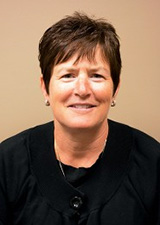

Furthermore, the statement identified “vision therapy” – a practice commonly promoted for the treatment of concussion – as an intervention for which there is insufficient evidence of efficacy. Vision therapy has been found to assist the visual system to recover from issues that are often linked with post-concussion syndrome and is supported by evidence-based and peer reviewed published articles.


But optometrists, educated and trained to diagnose and manage ocular dysfunctions and visual processing deficits related to brain injuries, were left out. That frustrates DeAnn Fitzgerald, OD, of Cedar Rapids, Iowa, and president, Neuro Optometric Rehabilitation Association (NORA). “An integrated team approach that incorporates the training and expertise of a variety of professionals can play a vital role in rehabilitation. NORA stresses the importance of an interdisciplinary, integrated team approach in the diagnosis and rehabilitation of patients with concussions, stroke or other neurological deficits.”
ACCESS IS KEY
Plus, she notes that optometrists are often more accessible than ophthalmologists. “We have 99 counties in Iowa, and there’s an optometrist in 98 of them. There are only 12 counties that have an ophthalmologist,” she says. Patients also often have to wait to see an ophthalmologist.
That becomes problematic for several reasons. First, it’s important to get patients diagnosed correctly and move them toward the best team members for their needs. Dr. Fitzgerald stresses that a vision exam is a critical component because “100 percent of people with a neurological affect – Parkinson’s, stroke, concussion – will have a visual problem. I don’t have any understanding of how providers are doing treatment without an eye exam,” she says.
Visual symptoms are not only prevalent, but they can be significant enough to impact treatment. She recently saw a patient who had been discharged from the hospital after a skull fracture and brain bleed. He sought out Dr. Fitzgerald, and as his wife pointed out, he was experiencing double vision, which affected his gait. Between visual and cognition problems, he was unable to participate effectively in the physical therapy that had been recommended.
TAKE ACTION
Dr. Fitzgerald says that the top five areas that need to be checked when a patient comes in following a sports-related concussion are vision, vestibular, cervical, jaw and first rib. “In a sports-related concussion, it’s not necessarily the hit; it’s the linear rotation or movement of the head and neck. We cannot separate whiplash and concussion,” she says.
It’s also important to get patients into care. “For days zero to three, rest is the cornerstone, but we need to get patients moving within seven to 10 days and into rehab. There should not be this long wait until the patient is symptom-free,” she says.
For ODs who chose not to manage concussion, Dr. Fitzgerald encourages them to get to know the providers – including other optometrists and neuro-optometrists – who can. “Remember that the vision-related issues of headache is the number one symptom of concussion, following by blurred vision,” she says. The NFL is using sideline technology that tracks a concussion suspect’s ability to track an image for up to 30 seconds. “If the NFL is diagnosing concussion through the eyes, accessibility to optometrists should be a priority.”
NORA offers resources to help patients and caregivers find the help they need following a concussion as well as tools and resources for optometrists and other healthcare professionals. NORA also features a doctor locater on its websites for access to providers who specialize in brain-injury related visual problems. For more information, visit noravisionrehab.org.



